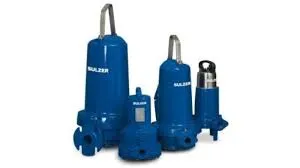English
- Afrikaans
- Albanian
- Amharic
- Arabic
- Armenian
- Azerbaijani
- Basque
- Belarusian
- Bengali
- Bosnian
- Bulgarian
- Catalan
- Cebuano
- Corsican
- Croatian
- Czech
- Danish
- Dutch
- English
- Esperanto
- Estonian
- Finnish
- French
- Frisian
- Galician
- Georgian
- German
- Greek
- Gujarati
- Haitian Creole
- hausa
- hawaiian
- Hebrew
- Hindi
- Miao
- Hungarian
- Icelandic
- igbo
- Indonesian
- irish
- Italian
- Japanese
- Javanese
- Kannada
- kazakh
- Khmer
- Rwandese
- Korean
- Kurdish
- Kyrgyz
- Lao
- Latin
- Latvian
- Lithuanian
- Luxembourgish
- Macedonian
- Malgashi
- Malay
- Malayalam
- Maltese
- Maori
- Marathi
- Mongolian
- Myanmar
- Nepali
- Norwegian
- Norwegian
- Occitan
- Pashto
- Persian
- Polish
- Portuguese
- Punjabi
- Romanian
- Russian
- Samoan
- Scottish Gaelic
- Serbian
- Sesotho
- Shona
- Sindhi
- Sinhala
- Slovak
- Slovenian
- Somali
- Spanish
- Sundanese
- Swahili
- Swedish
- Tagalog
- Tajik
- Tamil
- Tatar
- Telugu
- Thai
- Turkish
- Turkmen
- Ukrainian
- Urdu
- Uighur
- Uzbek
- Vietnamese
- Welsh
- Bantu
- Yiddish
- Yoruba
- Zulu
Telephone: +86 13120555503
Email: frank@cypump.com
Nov . 24, 2024 08:58 Back to list
slurry transfer pump
Understanding Slurry Transfer Pumps An Essential Component in Industrial Applications
Slurry transfer pumps play a crucial role in various industries, particularly in mining, construction, and wastewater treatment, where the efficient movement of heavy and viscous mixtures is essential. These specialized pumps are designed to handle slurries, which are mixtures of liquid and solid particles suspended within. The composition of these slurries can vary widely, affecting the choice of pump type and material.
What is a Slurry?
A slurry is typically composed of solid particles mixed with a liquid, often water. The solid content can range from a few percent to over 70%, significantly impacting the flow characteristics. Slurries can be abrasive, corrosive, or both, depending on the type of solids involved. This variability requires pumps that are robust and capable of handling different viscosity levels and solid concentrations without compromising performance.
Design and Functionality of Slurry Transfer Pumps
Slurry transfer pumps are specifically engineered to manage the complexities of moving slurries. They come in various designs, including centrifugal, positive displacement, and diaphragm pumps, each suited for different applications based on factors such as flow rate, pressure requirements, and the nature of the slurry.
1. Centrifugal Slurry Pumps These pumps utilize rotational energy to move slurries through the impeller’s action. They are suitable for low to medium viscosity slurries and are widely used due to their efficiency and ability to handle a large flow rate. However, they may struggle with highly abrasive materials or those containing a significant amount of solids.
2. Positive Displacement Pumps This type of pump is ideal for high-viscosity slurries. Positive displacement pumps work by trapping a fixed amount of slurry and forcing it through the discharge pipe. They provide a consistent flow rate regardless of pressure changes, making them suitable for applications where precise flow control is necessary.
3. Diaphragm Pumps Often utilized in applications requiring the handling of corrosive materials, diaphragm pumps can efficiently manage a variety of slurry compositions. They function by creating a vacuum that draws the slurry in before expelling it through a valve mechanism, which reduces wear and tear on the pump components.
slurry transfer pump

Applications Across Industries
Slurry transfer pumps are integral to several sectors
- Mining In mining operations, these pumps are used to transport ore slurries, tailings, and other materials over long distances. Their ability to handle abrasive materials makes them ideal for this challenging environment. - Construction In construction sites, slurry pumps are essential for moving concrete slurries and other mixtures, making them invaluable for projects requiring precision and reliability. - Wastewater Treatment In the treatment of sewage and industrial wastewater, these pumps are used to move sludge and sludge mixtures, facilitating effective waste management processes.
Challenges and Considerations
While slurry transfer pumps are robust, they are not without challenges. The abrasion from solid particles can significantly reduce the lifespan of pump components, leading to increased maintenance costs. Therefore, material selection is critical; using wear-resistant materials can extend pump life and reduce downtime.
Additionally, pump selection must consider the specific viscosity and solid concentration of the slurry. Failure to match the pump type to the slurry characteristics can result in inefficiencies and operational problems.
Conclusion
Slurry transfer pumps are essential for the effective management of slurry materials across various industries. Understanding their design, operation, and the specific applications can lead to improved efficiency and sustainability in industrial processes. As technology advances, we can expect further improvements in the performance, durability, and efficiency of these critical pumps, ensuring they continue to meet the demands of modern industry.
-
Heavy-Duty Mining Sludge Pumps - Wear-Resistant Slurry Handling
NewsAug.02,2025
-
Horizontal Split Case Pump with GPT-4 Turbo | High Efficiency
NewsAug.01,2025
-
ISG Series Pipeline Pump - Chi Yuan Pumps | High Efficiency, Durable Design
NewsAug.01,2025
-
Advanced Flue Gas Desulfurization Pump with GPT-4 Turbo | Durable & Efficient
NewsJul.31,2025
-
ISG Series Vertical Pipeline Pump - Chi Yuan Pumps | Advanced Hydraulic Design&Durable Construction
NewsJul.31,2025
-
ISG Series Vertical Pipeline Pump - Chi Yuan Pumps | Energy Efficient & Low Noise
NewsJul.31,2025










